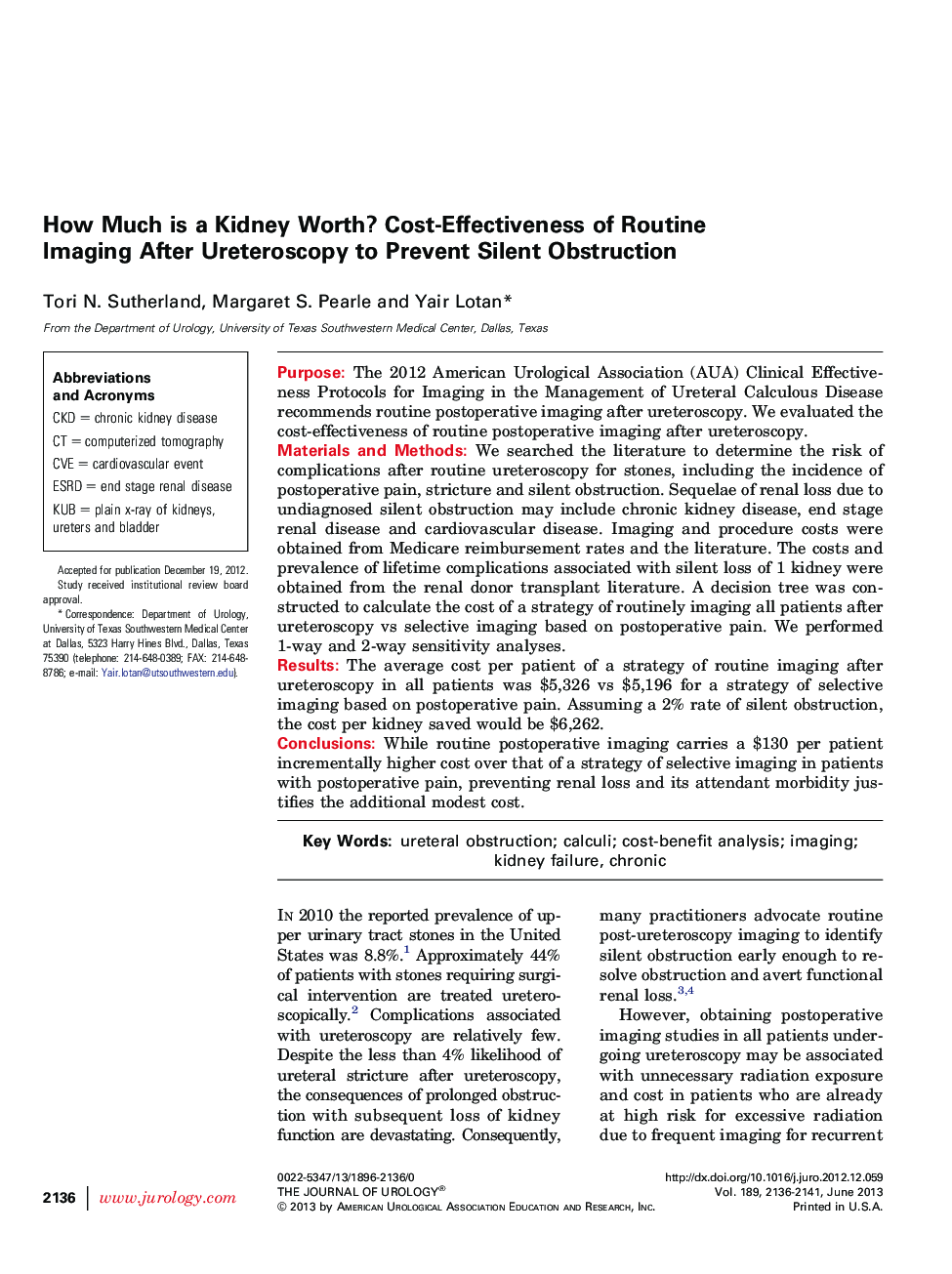| Article ID | Journal | Published Year | Pages | File Type |
|---|---|---|---|---|
| 3863096 | The Journal of Urology | 2013 | 6 Pages |
PurposeThe 2012 American Urological Association (AUA) Clinical Effectiveness Protocols for Imaging in the Management of Ureteral Calculous Disease recommends routine postoperative imaging after ureteroscopy. We evaluated the cost-effectiveness of routine postoperative imaging after ureteroscopy.Materials and MethodsWe searched the literature to determine the risk of complications after routine ureteroscopy for stones, including the incidence of postoperative pain, stricture and silent obstruction. Sequelae of renal loss due to undiagnosed silent obstruction may include chronic kidney disease, end stage renal disease and cardiovascular disease. Imaging and procedure costs were obtained from Medicare reimbursement rates and the literature. The costs and prevalence of lifetime complications associated with silent loss of 1 kidney were obtained from the renal donor transplant literature. A decision tree was constructed to calculate the cost of a strategy of routinely imaging all patients after ureteroscopy vs selective imaging based on postoperative pain. We performed 1-way and 2-way sensitivity analyses.ResultsThe average cost per patient of a strategy of routine imaging after ureteroscopy in all patients was $5,326 vs $5,196 for a strategy of selective imaging based on postoperative pain. Assuming a 2% rate of silent obstruction, the cost per kidney saved would be $6,262.ConclusionsWhile routine postoperative imaging carries a $130 per patient incrementally higher cost over that of a strategy of selective imaging in patients with postoperative pain, preventing renal loss and its attendant morbidity justifies the additional modest cost.
